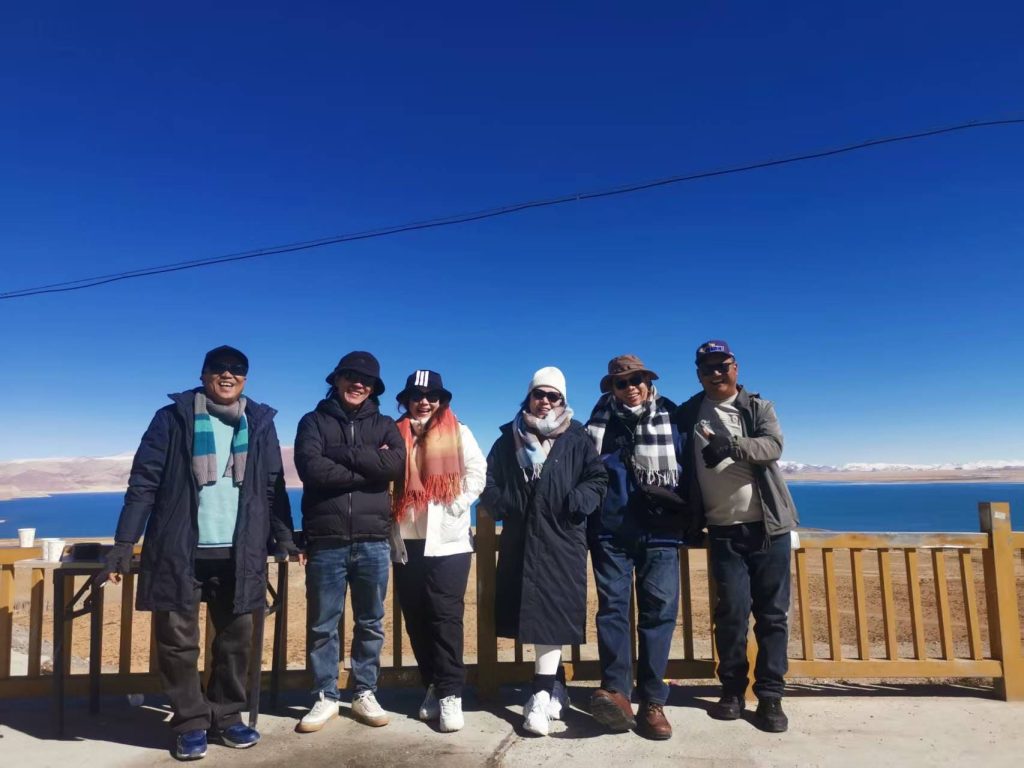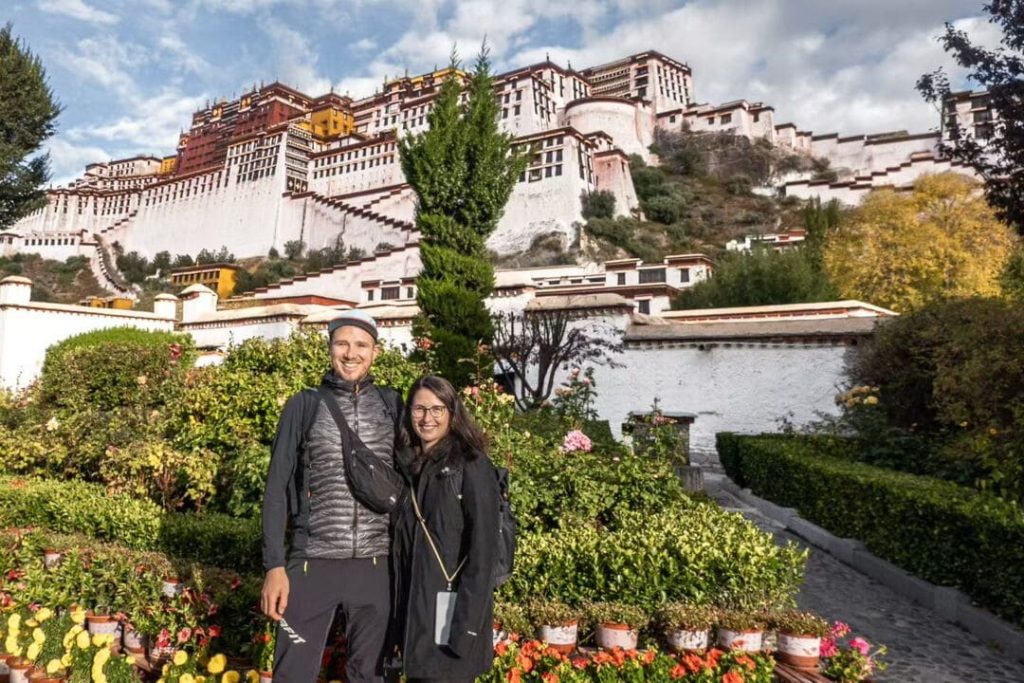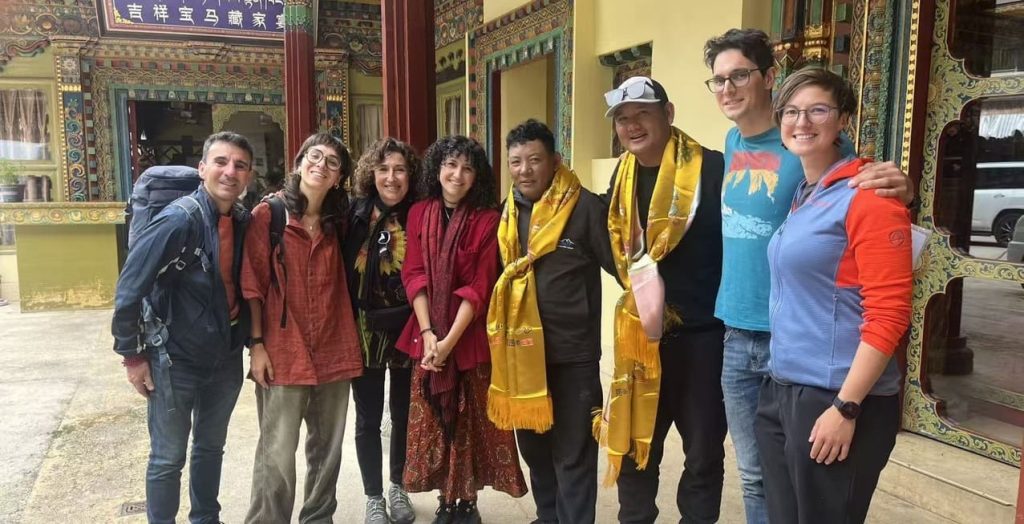Tibet, often referred to as “the Roof of the World,” has captivated travelers for centuries with its stunning landscapes, rich spiritual heritage, and unique culture. At the heart of this mystical land lies Lhasa, the spiritual and cultural capital of Tibet. Whether you’re an avid traveler, a spiritual seeker, or simply someone looking to experience a world unlike any other, a Lhasa trip promises an adventure of a lifetime.
In this comprehensive guide, we’ll take you through everything you need to know about planning a Lhasa tour, including the best places to visit, what to expect, tips for a successful trip to Lhasa, and how to make the most of your journey to this awe-inspiring destination.

Why Visit Lhasa?
Lhasa, which means “Place of the Gods” in Tibetan, is home to some of the most sacred sites in Tibetan Buddhism, including the iconic Potala Palace and the Jokhang Temple. But Lhasa is more than just a pilgrimage destination. It offers travelers the chance to witness one of the world’s most unique cultures, experience breathtaking landscapes, and gain a deeper understanding of Tibet’s spiritual traditions.
Here are a few reasons why Lhasa should be on your travel radar:
• Cultural Immersion: Lhasa is a living museum of Tibetan culture, with monasteries, ancient temples, and vibrant markets.
• Spiritual Experience: As the center of Tibetan Buddhism, Lhasa offers a spiritual journey like no other, whether you’re visiting sacred sites or participating in rituals.
• Scenic Beauty: The city is nestled in the Tibetan Plateau, surrounded by towering mountains, vast plains, and clear blue skies, offering travelers unforgettable views.
• Historical Significance: From the ancient Potala Palace to the Tibetan Revolutionary Movement, Lhasa is a city of profound historical importance.

Best Time to Travel to Lhasa
Before embarking on your Lhasa trip, it’s important to choose the best time to visit. Lhasa is situated at an altitude of about 3,650 meters (12,000 feet), which means the weather can be quite extreme. Here’s a breakdown of what you can expect during different seasons:
• Spring (April to June): This is one of the best times to visit Lhasa, with mild temperatures and clear skies. The days are sunny and pleasant, making it ideal for outdoor activities like sightseeing and trekking.
• Summer (July to August): While summer is the peak tourist season in Tibet, it can be quite crowded, especially during the Shoton Festival (usually in August). The weather is warm, but it can also be rainy in some parts of Tibet.
• Autumn (September to November): Like spring, autumn offers great weather and fewer tourists. The landscapes are particularly stunning, with golden hues in the fields and crisp mountain air.
• Winter (December to February): Winter is off-season in Lhasa, with cold temperatures and occasional snow. However, if you’re looking for a quieter experience, this is a good time to visit, as the crowds thin out. It’s also the best time to experience the Tibetan New Year (Losar), a culturally rich festival celebrated in February.
How to Reach Lhasa
By Air
The quickest way to travel to Lhasa is by flight. The city has its own airport, Lhasa Gonggar Airport (LXA), located about 60 kilometers (37 miles) from the city center. It’s one of the highest airports in the world and offers regular flights to major cities in China, including Chengdu, Xian, and Beijing. International travelers can typically connect through these cities before heading to Lhasa.
Tips for Flying to Lhasa:
• Make sure to check flight availability, as the airport has limited international flights.
• Be mindful of altitude sickness. Lhasa is located at a high altitude, so give yourself time to acclimatize.
By Train
For those looking to take a more scenic route, the Tibet Railway is an unforgettable journey. The train ride from Xining (on the mainland) to Lhasa takes about 22-24 hours, passing through some of the most remote and beautiful landscapes on the planet, including the Qinghai-Tibet Plateau.
The Tibet Railway is the highest in the world, with many of its tracks running at altitudes above 4,000 meters (13,000 feet). This makes the journey a one-of-a-kind experience, offering passengers sweeping views of the Tibetan Plateau.
Tips for Taking the Train:
• While the train is a comfortable way to travel, be prepared for the altitude, especially during the latter part of the journey.
• The train provides oxygen to help with acclimatization, but it’s still essential to stay hydrated and rest.
By Road
While less common, it’s possible to drive to Lhasa from cities in neighboring Nepal, such as Kathmandu, or from other parts of Tibet. The journey from Kathmandu to Lhasa is about 1,000 kilometers (620 miles), taking around 7-8 days depending on road conditions.
While driving offers a unique experience, it’s important to note that the road is rough and the altitude can be very challenging. It’s recommended to take this route with an organized tour group or a local guide.

Top Attractions on Your Lhasa Tour
1. Potala Palace
No Lhasa trip would be complete without a visit to the magnificent Potala Palace. Once the winter residence of the Dalai Lama, this iconic structure rises dramatically over the city and is a UNESCO World Heritage site. The Potala Palace houses countless Tibetan Buddhist artifacts, sacred relics, and beautiful murals depicting Tibetan life.
Visitors can explore the various halls, chapels, and courtyards inside the palace, which is built on a steep hill. The views from the top are nothing short of spectacular, offering panoramic views of Lhasa and the surrounding mountains.
Must-See Features:
• The Red Palace: Home to the tombs of past Dalai Lamas and many sacred relics.
• The White Palace: Once the residence of the Dalai Lama, now a museum showcasing Tibetan culture and history.
• The Prayer Halls: Filled with golden Buddha statues and intricate thangka paintings.
2. Jokhang Temple
The Jokhang Temple is considered the holiest temple in Tibetan Buddhism and is the spiritual heart of Lhasa. Pilgrims from all over Tibet come here to pay their respects and perform kora (circumambulation) around the temple.
Inside, you’ll find the sacred Jowo Shakyamuni statue, a life-sized image of the young Buddha, which is considered one of the most important and revered images in Tibetan Buddhism. The temple’s architecture reflects both Tibetan and Indian influences, with its golden roofs, intricate carvings, and murals.
3. Barkhor Street
A bustling market surrounding the Jokhang Temple, Barkhor Street offers a vibrant and colorful atmosphere where you can immerse yourself in Tibetan culture. The narrow street is lined with traditional shops selling thangkas, prayer beads, Tibetan rugs, and jewelry. It’s also a great place to witness the daily rituals of local Tibetans as they make their way to the Jokhang Temple to offer prayers.
4. Sera Monastery
Located on the outskirts of Lhasa, Sera Monastery is one of the largest and most important monasteries in Tibet. Founded in the 15th century, the monastery is home to hundreds of monks who engage in study, prayer, and debate.
One of the highlights of a visit to Sera is the monastic debate sessions, where monks engage in animated philosophical discussions. These debates are not only intellectually stimulating but also provide insight into the depth of Tibetan Buddhist teachings.
5. Norbulingka Palace
The Norbulingka Palace, located just outside of Lhasa, was the summer residence of the Dalai Lamas. It’s a stunning complex of palaces, gardens, and temples, offering visitors a more relaxed experience compared to the Potala Palace. The gardens are especially beautiful, and it’s a great place to take a peaceful stroll and reflect on Tibetan history.

Cultural Etiquette and Tips for a Successful Lhasa Tour
When traveling to Lhasa, it’s important to be mindful of the local culture and customs. Tibetans are warm, welcoming people, but there are some essential tips and etiquette to follow:
• Respect Sacred Spaces: Many of the sites in Lhasa, such as temples and monasteries, are places of active worship. Always be respectful by speaking quietly, avoiding photos in sensitive areas, and removing your shoes before entering sacred spaces.
• Mind the Kora: If you see people walking around sacred sites or temples in a clockwise direction, they are performing a kora. If you wish to join them, always follow the same direction and walk respectfully.
• Dress Modestly: While Tibetans are generally not strict about dress codes, it’s a good idea to dress modestly, especially when visiting temples and monasteries. Avoid revealing clothing.
• Avoid Political Discussions: Tibet has a complex political situation, and it’s best to avoid discussions related to politics or the Tibetan independence movement while traveling in Lhasa.
• Altitude Considerations: Lhasa sits at an altitude of 3,650 meters (12,000 feet), and altitude sickness can be a concern for some travelers. It’s important to take it slow, drink plenty of water, and
